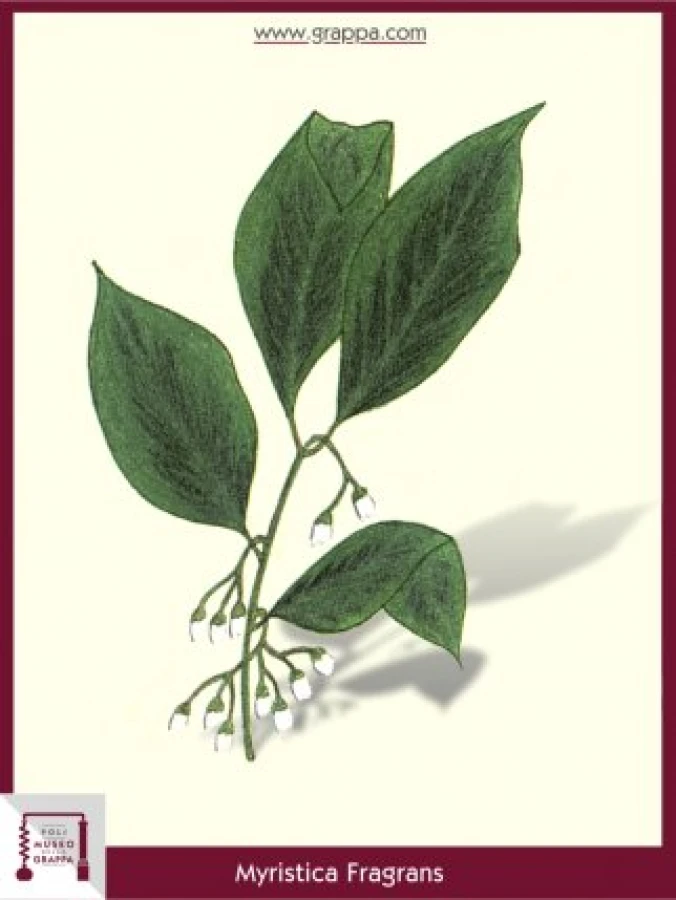An exotic Grappa
Nutmeg
An exotic Grappa
Plant:
Nutmeg
Plant Part:
seed
Plant Properties:
aromatic, digestive, relieving flatulence, stimulating, stomachic expectorant, eupeptic
Description:
The traveler, Antonio Pigafetta from Vicenza, became acquainted with the muscat tree during his travels on the Banda Islands.
It is a diocesan plant whose pear-shaped fruit pops into two capsules as soon as it is ripe. The reddish seed coat, which surrounds the seed, is called Macis.
The use of the seed, the nutmeg, had been widespread on our continent long before the discovery by Pigafetta.
It is presumed that it was imported from the Arabs of India and made known as a medicinal and food drug.
Later, the Dutch held the monopoly of the spice which thought of the trick soaking the nutmeg in lime milk to kill the shoot and prevent further cultivations of the seeds.
This practice, which is still being used in our days, proved to be very useful for the conservation of the seed, especially since they come from distant countries and have to remain in ship loaders for a long time.
The characteristic aroma of nutmeg and its use in the kitchen is known to everyone; but only few people know that it can be used in the liqueur industry as well.
Ingredients:
- 2 nutmegs
- some cinnamon
- 1 clove
- 5 tbsp of sugar
- 1 liter of Grappa
Preparation:
A good digestive and very aromatic Grappa can be made by placing two (halved) nutmegs, some cinnamon, a clove and five tablespoons of dissolved sugar for 2 months in a liter of Grappa in a shady place.
After filtration, the Grappa is ready to be aged for four months; it will get a nice amber color and a strong, stimulating taste.


